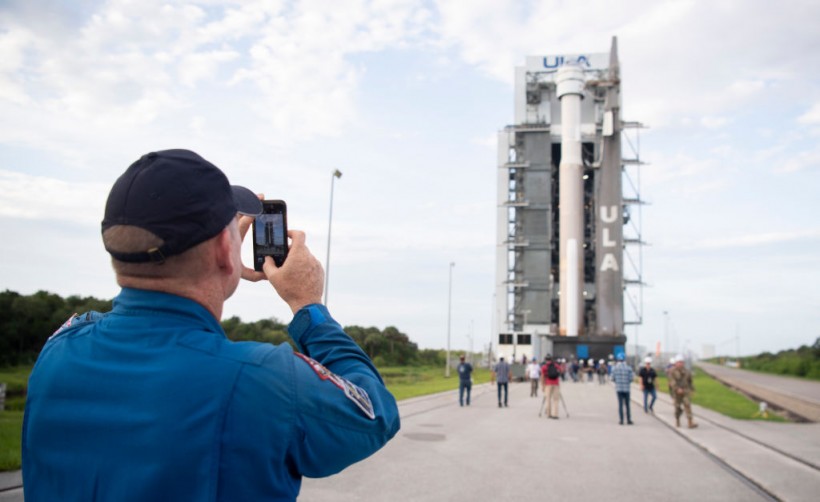NASA Boeing Starliner's latest delayed launch last Sept. 22 is likely due to the effects of humidity, the space firm exec revealed.

CAPE CANAVERAL, FL - AUGUST 2: In this NASA handout, NASA astronaut Barry Butch" Wilmore takes a picture with his cell phone as a United Launch Alliance Atlas V rocket with Boeings CST-100 Starliner spacecraft aboard is seen as it is rolled out of the Vertical Integration Facility to the launch pad at Space Launch Complex 41 ahead of the Orbital Flight Test-2 (OFT-2) mission, Monday, Aug. 2, 2021 at Cape Canaveral Space Force Station in Florida. Boeings Orbital Flight Test-2 will be Starliners second uncrewed flight test and will dock to the International Space Station as part of NASA's Commercial Crew Program. The mission, currently targeted for launch at 1:20 p.m. EDT Tuesday, Aug. 3, will serve as an end-to-end test of the system's capabilities. Wilmore is scheduled to fly aboard Starliners Crewed Flight Test mission.
NASA Boeing Starliner's Launch Delay
As per The Verge, the firm behind the Starliner, Boeing, will still investigate the reason behind the corrosive valves of the spacecraft.
However, the officials of Boeing have already narrowed down the source of the issue in its latest hypothesis.
Nevertheless, an investigation will still further study the problem to implement any necessary restructuring to the spacecraft that could solve the critical issue.
It is to note that the problematic valve issue of Boeing's Starliner abruptly aborted the test flight of the spacecraft last Aug. 3, which further delayed the space mission of the firm and NASA in mid-2022.
NASA Boeing Starliner Mission
The CST-100 Starliner of Boeing is supposed to bring NASA or the National Aeronautics and Space Administration astronauts to the International Space Station or ISS under the Commercial Crew Program of the United States space agency.
However, NASA wants Boeing to prove to the space agency that the Starliner could really lift astronauts to the ISS without any hiccups that could compromise the safety of its passengers.
As such, the space firm is required to test the Starliner in an uncrewed flight before the ISS mission.
But unfortunately, Boeing is still having a hard time proving its worth to NASA.
The firm's first attempt to launch the Starliner was in Dec. 2019, which experienced a couple of glitches in the software of the space vehicle.
So, the first flight of the Starliner did not even reach the International Space Station. Instead, the people behind the space flight had to force the vehicle to return to Earth.
That said, Boeing is hoping to try launching the Starliner last Aug. 2021. However, the flight figured in critical issues with the valve of the spacecraft.
And up until now, Boeing is still studying the problems in the valves of the Starliner, which seems to have developed as there is now a possible source of the issue to look into.
NASA Boeing Starliner's Launch Delay and Humidity
According to a report of Arstechnica, the chief engineer for space and launch of Boeing, Michelle Parker, announced a possible reason behind the valve issue in a news conference, noting that moisture must have come into play.
The Boeing exec further noted that the valves of the Starliner got stuck perhaps due to humidity affecting the spacecraft.
Thus, corrosion was seen in the valves of the Starliner, which, Parker suggested, could be due to the combination of both the oxidizer and moisture, leading to the production of nitric acid.
Nevertheless, Parker still claimed that the vehicle was actually designed to overcome humidity, which is expected to be high around August in Florida.
Related Article: NASA Transfers Boeing Starliner Mission Astronauts to SpaceX's Crew-5 Amid Flight Delays-Here's Why
This article is owned by Tech Times
Written by Teejay Boris









